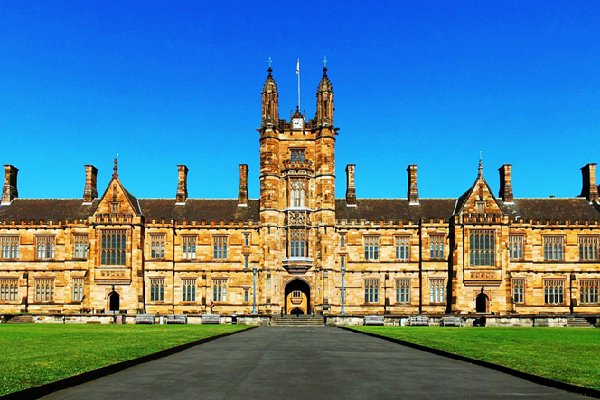University Of Sydney Researchers Engineered With Impact
From biomedical engineering and quantum hardware through to wave modelling and computer science, here are seven times in 2022 that our researchers led impactful research.
Spray coating developed to shield surfaces from viruses, bacteria
The sprayable coating.
A first-of-its-kind sprayable coating that can prevent the surface spread of infection from bacteria and viruses, including COVID-19, over a sustained period has been developed by a team of Australian researchers including Professor Antonio Tricoli from School of Biomedical Engineering.
Described in the journal Advanced Science, the spray works two ways: repelling viruses and bacteria through an air-filled barrier, and killing pathogens through microscopic materials if the layer becomes damaged or submerged for extended periods. Read more here.
Silicon-carbide modulator overcomes decades long ‘missing block’
Professor Xiaoke Yi.
A collaboration with Harvard University has led to the development of a new-generation electro-optic modulator that could stamp out its bulky predecessor through the creation of a smaller, stronger, cooler, faster and cost-effective on-chip system.
Led by between Professor Xiaoke Yi from the School of Electrical and Information Engineering and Sydney Nano Institute, the researchers believe their technique, which was described in Nature Communications, will advance quantum communications and microwave photonics by facilitating photonic integration; the co-integration with traditional electronics and quantum emitters. Read more here.
Digital tool to give surgeons a pre-theatre rehearsal
Professor Qing Li and Benjamin Ferguson.
Jawbone reconstruction – or orthognathic surgery – is a complicated medical procedure whereby a person’s jaw is treated for significant trauma, such as from a car crash or gunshot wound, or diseases like oral cancer.
A former PhD student in the University of Sydney’s School of Aerospace, Mechanical and Mechatronic Engineering, Ben Berguson is developing a surgical planning tool to assist surgeons in planning complex jawbone reconstruction procedures using these new generation devices.
Using advanced computational technology and decision-making algorithms, the tool works by generating a ‘digital twin’ of the patient using CT scan data. It then rapidly simulates different designs of the implant before 3-D printing the final, optimal design, allowing surgeons to perform a digital ‘rehearsal’ prior to theatre. Read more.
Sensor bracelet designed to give back control to hand-impaired
The bracelet was developed by undergraduate engineering student Stephen Lin.
People who lack the ability to use their hands from conditions like motor neurone disease and cerebral palsy may one day be able to play video games that require a handheld controller through the use of customisable, wearable 3D printed bracelet.
Made with a type of resin, the bracelet works by picking up tiny movements in the user’s wrist when they move their fingers. These movements are sent wirelessly to a computer, and are then interpreted, classified and adapted using machine learning. The interpreted information can then be used to play a game, control a computer interface or communicate using a smart device.
The bracelet and program have been developed by a team of engineers in the University of Sydney’s School of Computer Science, led by undergraduate honours student Mr Stephen Lin under the supervision of Dr Anusha Withana. Read more.
Advancing Australian direct air capture technology
Professor Deanna D’Alessandro.
Reaching net-zero can only be achieved by removing historical emissions, according to Professor Deanna D’Alessandro, who is working with industry partners to advance direct air capture technology, a process whereby historical carbon dioxide emissions are removed from the air.
“Even if the world achieved net-zero tomorrow and began restoring the globe’s natural carbon conversion systems there is still the issue of historical emissions which without intervention cannot be remediated quickly enough to mitigate the progression of global warming,” said Professor D’Alessandro in an opinion piece.
“Our team at the University of Sydney in partnership with industry leaders on this project, Southern Green Gas (SGG) and AspiraDAC are supercharging direct air capture technology’s potential to address the issue of historical emissions.” Read more.
New tech’s potential to significantly reduce energy storage costs
Researchers are hoping that a new, low-cost battery which holds four times the energy capacity of lithium-ion batteries and is far cheaper to produce will significantly reduce the cost of transitioning to a decarbonised economy.
Led by Dr Shenlong Zhao from the University’s School of Chemical and Biomolecular Engineering, the battery has been made using sodium-sulphur – a type of molten salt that can be processed from sea water – costing much less to produce than lithium-ion. Read more.
Research unravelling the “mystery” of extreme waves
PhD candidate Yuchen He looking out at a rough swell hitting Bondi Beach.
Ocean waves up to 30 metres that seemingly appear at random have long inspired legend and stumped scientists. Now, researchers at the University of Sydney and Kyoto University are unravelling their mysteries.
Research published in Physical Review Letters by University of Sydney and Kyoto University researchers has found that extreme or ‘rogue’ ocean waves – colossal walls of water that seemingly appear at random and have the potential to destroy marine infrastructure, carve out coastlines and even threaten life – could be more frequent in multi-directional wave formations than previously expected.
These enormous “rogue” swells have long captured the imagination. Although mathematical modelling has helped scientists and engineers hypothesise different causes, since the 1980s it was thought they were caused by either wave overlap (the superposition principle) or a mechanism which triggers a rogue wave (modulation instability) in one-directional wave systems. In multi-directional systems, known as crossing wave formations or crossing seas, modulation instability was believed to be inactive, rendering extreme waves rare or impossible in these conditions.

